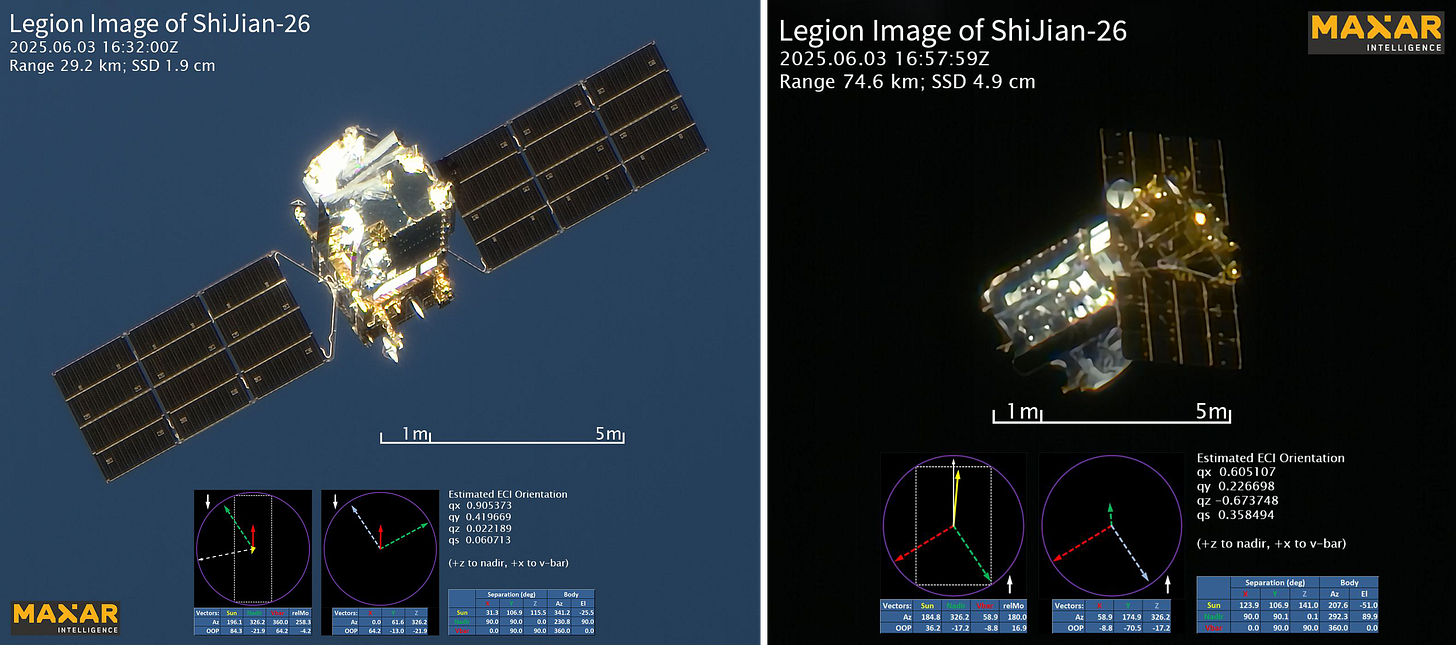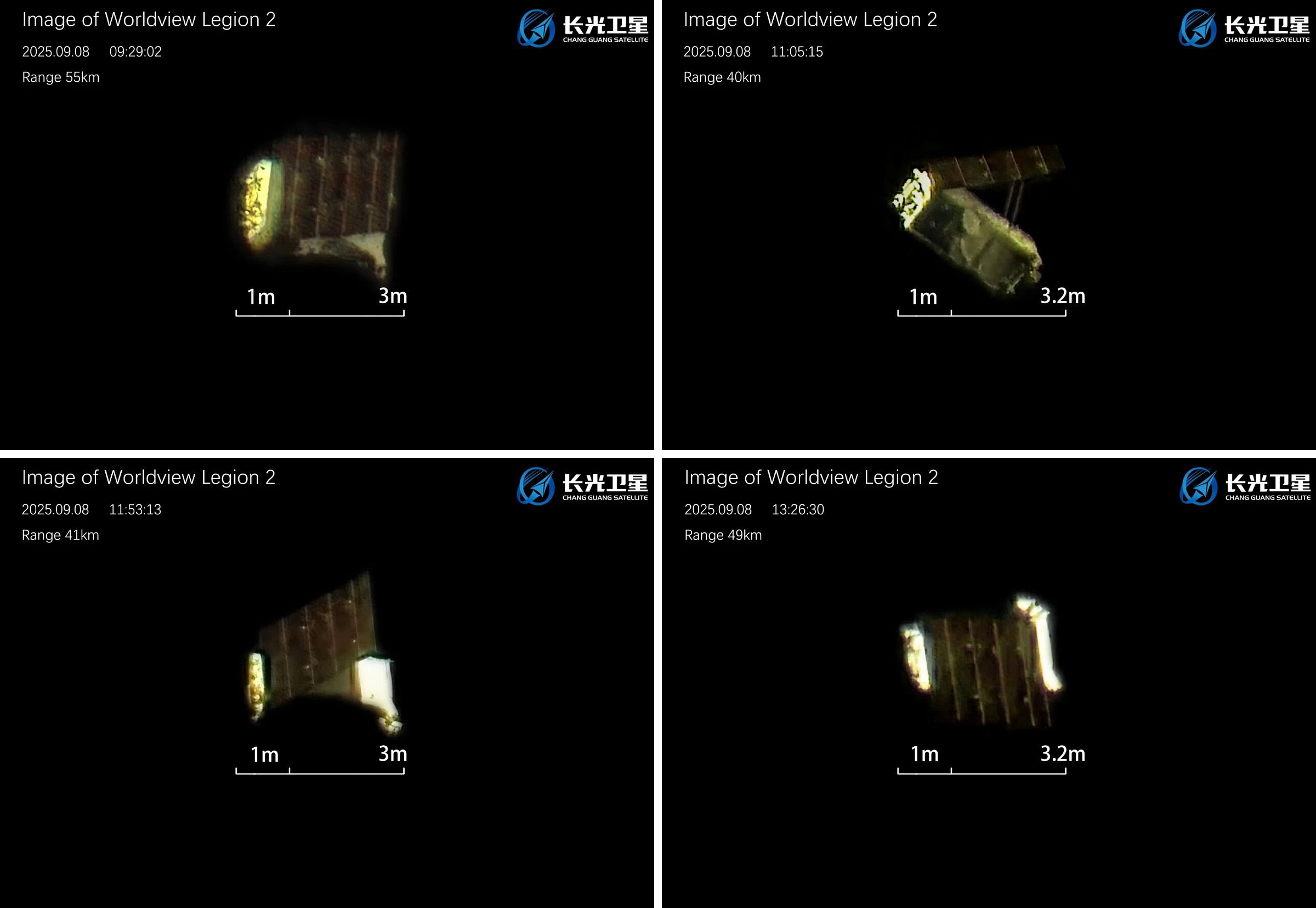Chinese, American Firms Begin Imaging Each Other in Space
Secrecy fades in orbit with satellite-to-satellite imaging commercially demonstrated by both nations.
In orbit, no satellite can hide for long, with Chinese and American companies demonstrating satellite-to-satellite imagery over the last few months.
Maxar, a U.S. space-based imaging and intelligence firm, shared photos on July 10th of the Shijian-26 (实践二十六号) technology test and imaging satellite, launched May 29th, and primarily focused on supporting agricultural policy. Alongside the release of the images, one Maxar executive wrote:
“At an amazing [Spatial Sampling Distance] at 1.9 cm, this is a crystal-clear picture of the [Shijian-26], a Chinese optical remote sensing satellite.” — ”This type of resolution is revolutionary for space situational awareness. The [Shijian-26] represents China's latest generation of optical reconnaissance satellites, and our ability to image it this clearly demonstrates a new era in satellite-to-satellite observation.” — ”This capability fundamentally changes space security for the future.”
Shijian-26, part of a series of spacecraft to understand best operation practices, has been labeled by some foreign outlets (and Maxar) as a spy satellite, although images of the spacecraft have been available on Weibo for months since Maxar’s images were shared, indicating it is not highly classified. It is also known that the Harbin Institute of Technology (哈尔滨工业大学), Changchun Institute of Optics, Fine Mechanics and Physics of the Chinese Academy of Sciences (中国科学院长春光学精密机械与物理研究所), and DFH Satellite Co Ltd (航天东方红卫星有限公司), under the China Academy of Space Technology (中国空间技术研究院), did contribute to the spacecraft as well.
Nonetheless, Maxar’s imaging of Shijian-26 may have ruffled some feathers within China’s space sector as Changguang Satellite Technology Co Ltd (长光卫星技术股份有限公司), commercial operator of ~130 Earth imaging satellites and previously sanctioned by the U.S. government, released a set of images of Maxar’s WorldView Legion 2 satellite on September 13th (taken on September 8th), photographed by a Jilin-1 spacecraft (吉林一号). No comments from the company were attached alongside them, but it is believed to have been the first time a Chinese satellite operator released images of another spacecraft.
Due to the lack of comments from Changguang Satellite Technology, it’s unknown why the images were taken and released. It could be that through demonstrating satellite-to-satellite imaging, the company is preparing for an investment round to develop spacecraft dedicated to imaging orbiting objects, as the Jilin-1 fleet is designed to image Earth.
However, Daniel Marín, author of Spanish space blog Eureka, believes the imagery from the Chinese firm could be a minor geopolitical warning shot to the U.S., demonstrating China's ability to image and monitor American spacecraft from commercial enterprises, with more capable sensors likely in state-owned enterprises. Those state-owned sensors could then unveil truly classified U.S. satellites if China were so inclined, and if American commercial satellites keep flying past for photos (which are used to beg for government money).





Appreciate your articles!
In 2018 there was an image of the ISS posted on weibo.com taken on 6 Sep 2018 by 2015-057D / 40961 (Jilin-1 Guangxe A xing). Ref https://www.weibo.com/u/5838191069 (not working for me at the moment). Would post graphic/image here but appears comments do not support. Hit me up via DM!